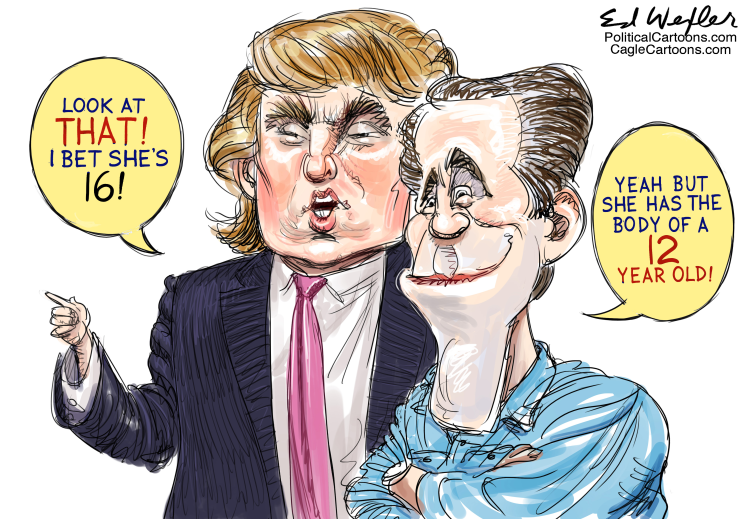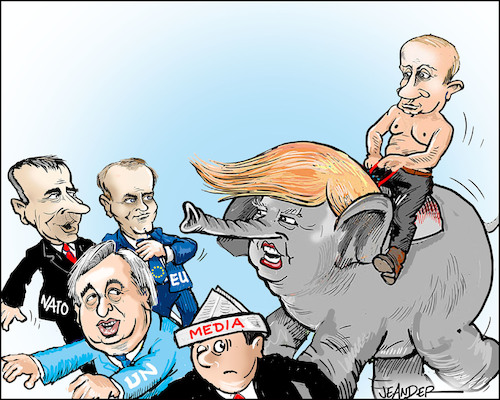Economist Thomas Piketty wrote a paper about this in 2018, though the Democrats paid no attention
KEITH A. SPENCER
JUNE 2, 2019 6:00PM (UTC)
The Republican Party has earned a reputation as the anti-science, anti-fact party — understandably, perhaps, given the GOP's policy of ignoring the evidence for global climate change and insisting on the efficacy of supply-side economics, despite all the research to the contrary. Yet ironically, it is now the Democratic Party that is wantonly ignoring mounds of social science data that suggests that promoting centrist candidates is a bad, losing strategy when it comes to winning elections. As the Democratic establishment and its pundit class starts to line up behind the centrist nominees for president — mainly, Joe Biden, Cory Booker and Kamala Harris — the party's head-in-the-sand attitude is especially troubling.
The mounds of data to which I refer come from Thomas Piketty, the French political economist who made waves with his 2013 book "Capital in the Twenty-First Century." This paper, entitled "Brahmin Left vs. Merchant Right: Rising Inequality & the Changing Structure of Political Conflict," analyzes around 70 years of post-election surveys from three countries — Britain, the United States and France — to comprehend how Western politics have changed in that span. (Note: I wrote about this paper in Salon last year in a slightly different context, before the 2020 Democratic Primary really got going.)
First, the sheer amount of data analyzed in Piketty's paper is stunning. He and his researchers analyze voters in those three countries by income (broken into deciles), education, party, gender, religion and income disparity. The final 106 pages of the paper consist of graphs and charts. This is a seriously detailed data analysis that took years of work, and any intelligent political party operative should take it very seriously.
Now, for the findings. Piketty's basic thesis is that poorer and less educated voters were historically the kind of voters who voted for left and left-liberal parties. These voters understood that their class interests did not align with the right-wing parties of the rich; thus, historically, the "high-income, high education" voters picked the right-wing parties.
This shifted in the past 70 years: "high-education elites now vote for the 'left', while high- income/high-wealth elites still vote for the 'right' (though less and less so)," Piketty notes. Note the scare quotes around "left": part of Piketty's point is that the so-called left parties, like the Democratic Party in the U.S., the Socialists in France and Labour in the U.K., have in the past two decades not really been that left, at least on economic issues. With the exception of Jeremy Corbyn's contemporary Labour Party, the aforementioned are aligned with the same kind of neoliberal economic policies that rich elites favor.
"This can contribute to explain rising inequality and the lack of democratic response to it, as well as the rise of 'populism,'" Piketty argues. "Globalization and educational expansion have created new dimensions of inequality and conflict, leading to the weakening of previous class-based redistributive coalitions."
Now, here's the line that should make the Democratic Party perk up:
Without a strong egalitarian-internationalist platform, it is difficult to unite low-education, low-income voters from all origins within the same coalition and to deliver a reduction in inequality. Extreme historical circumstances can and did help to deliver such an encompassing platform; but there is no reason to believe that this is a necessary nor a sufficient condition.
To translate from academese: An "egalitarian-internationalist platform" means the kind of political platform that articulates a shared, global struggle among all of the poor and working-class people around the world — in other words, a class-conscience platform that recognizes that rich people are not on the same side as the rest of us, and have different interests and are eager to exploit us. And egalitarian means the opposite of nationalistic or xenophobic — united in a common class struggle, you might say, towards a mutual goal of universal civil rights.
Democratic presidential candidates like Elizabeth Warren, Mike Gravel and Bernie Sanders fulfill this kind of platform to some degree. When Sanders uses terms like "99%" and "1%", or talks of universalizing abortion rights or healthcare or housing rights, he is articulating that "egalitarian-internationalist platform." Warren is interesting, in that she advocates for heavy regulation and taxation of the rich, though she is hesitant to disparage their right to actually be rich — and she is quick to identify as a capitalist. Still, her policies infuriate rich centrists like Starbucks CEO Howard Schultz, so one could definitely count her as among the egalitarian-internationalists, or at least adjacent. Gravel, who has been under-covered by the press, is running on a crowdsourced platform that, in the words of Jacobin writer Branko Marcetic, "reads like a left-wing policy wish list."
Yet the Democratic Party and their mouthpieces at major newspapers are clearly not heeding Piketty's prophecy. Rather, TV pundits and op-ed writers of every major newspaper epitomize how the Democratic establishment has already reached a consensus: the 2020 nominee must be a centrist, a Joe Biden, Cory Booker or Kamala Harris–type, preferably. They say that Joe Biden should "run because [his] populist image fits the Democrats’ most successful political strategy of the past generation" (David Leonhardt, New York Times), and though Biden "would be far from an ideal president," he "looks most like the person who could beat Trump" (David Ignatius, Washington Post). Likewise, the same elite pundit class is working overtime to torpedo left-Democratic candidates like Sanders.
For someone who was not acquainted with Piketty's paper, the argument for a centrist Democrat might sound compelling. If the country has tilted to the right, should we elect a candidate closer to the middle than the fringe? If the electorate resembles a left-to-right line, and each voter has a bracketed range of acceptability in which they vote, this would make perfect sense. The only problem is that it doesn't work like that, as Piketty shows.
The reason is that nominating centrist Democrats who don't speak to class issues will result in a great swathe of voters simply not voting. Conversely, right-wing candidates who speak to class issues, but who do so by harnessing a false consciousness — i.e. blaming immigrants and minorities for capitalism's ills, rather than capitalists — will win those same voters who would have voted for a more class-conscious left candidate. Piketty calls this a "bifurcated" voting situation, meaning many voters will connect either with far-right xenophobic nationalists or left-egalitarian internationalists, but perhaps nothing in-between.
Piketty's paper is an inconvenient truth for the Democratic Party. The party's leaders see themselves as the left wing of capital — supporting social policies that liberal rich people can get behind, never daring to enact economic reforms that might step on rich donors' toes. Hence, the establishment seems intent on anointing the centrist Democrats of capital, who push liberal social policies and neoliberal economic policies.
History speaks to Piketty's truths. In the early twentieth century, the rural Great Plains states were hotbeds of socialism; Kansas and Oklahoma particularly had vast socialist movements, parties and newspapers. The demographics of these states weren't particularly different from now — lots of rural white people, many of whom are farmers. As the Oklahoma Historical Society notes:
In the first two decades of the twentieth century the Socialist Party of Oklahoma consistently ranked as one of the top three state socialist organizations in America. At the party's height in the elections of 1914, the Socialist Party candidate for governor, Fred W. Holt, received more than 20 percent of the vote statewide. In Marshall and Roger Mills counties, where the Socialist Party was strongest, Holt captured 41 and 35 percent of the vote, respectively. More than 175 socialists were elected to local and county offices that year, including six to the state legislature.
These rural whites saw their struggles and their oppressors reflected back in the rhetoric of the socialist candidates and thinkers that spoke to them, the "egalitarian internationalists" to use Piketty's language.
The type of people who live in these states haven't changed too much — but there is a vacuum where those politicos once were. Now, all they have is the right-wing explications of their struggles from Fox News and their ilk. Many of those red-state voters connected with Sanders in the 2016 primary, as we observed then.
Now, why hasn't the Democratic Party heeded Piketty's warning? I think you already know why. To quote Upton Sinclair: "It is difficult to get a man to understand something, when his salary depends upon his not understanding it." The donor base of the Democratic Party consists of a lot of pretty rich people who prefer the Democratic Party to be left on social issues but right on economic issues. The party elite see these wealthy folks as part of the party, and don't want to nominate a candidate who accurately sees them as class enemies. I wonder sometimes if there are Democratic Party eggheads working for the DNC who are aware of Piketty's prophecy but are not willing to risk evolving the party, lest they lose their benefactors.
https://www.salon.com/2019/06/02/there-is-hard-data-that-shows-that-a-centrist-democrat-would-be-a-losing-candidate/
***************

 Home
Home



